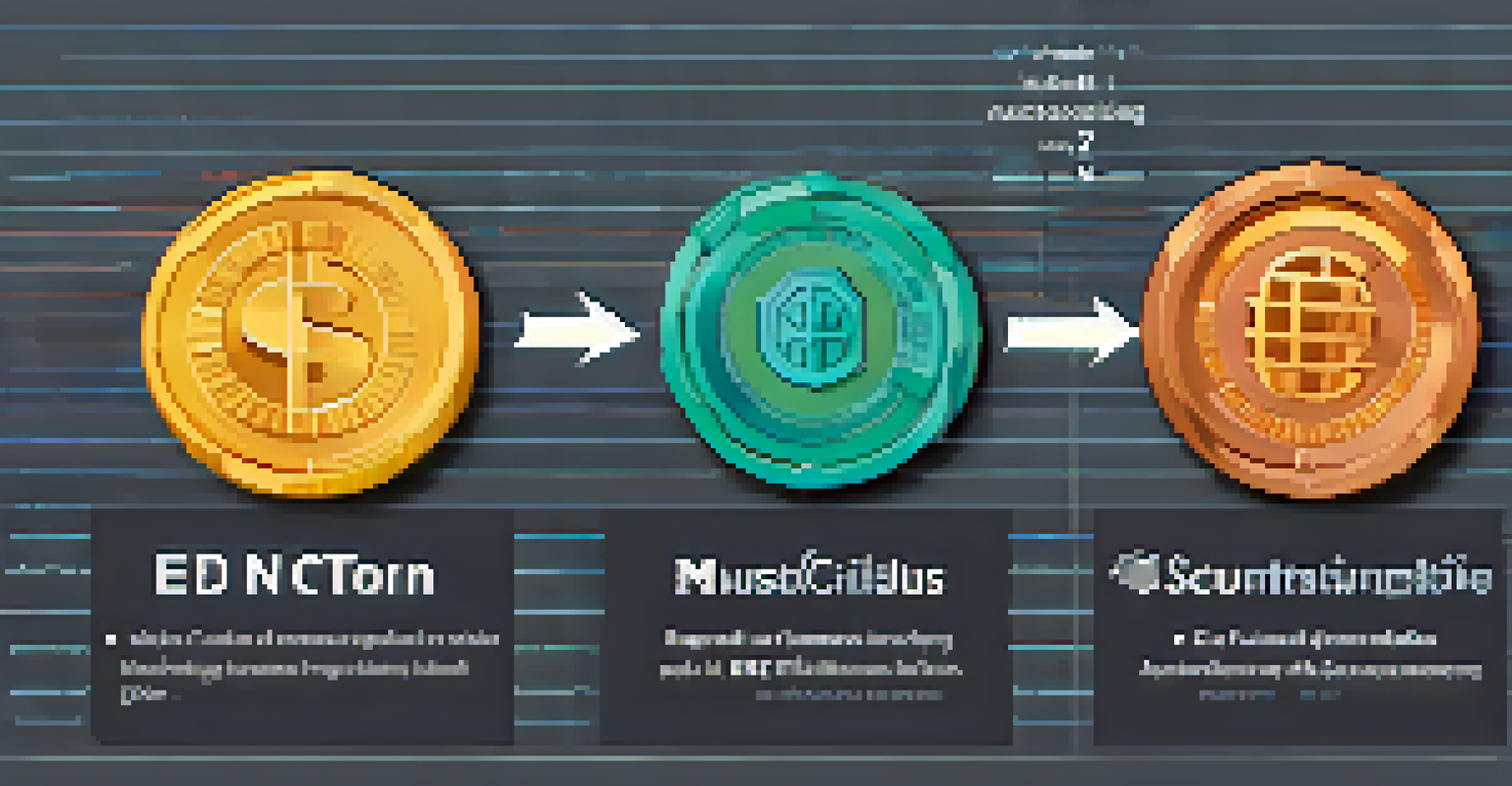ERC Standards: What You Need for Token Creation on Ethereum

What Are ERC Standards in the Ethereum Ecosystem?
ERC stands for Ethereum Request for Comments, which is a set of guidelines that define how tokens should operate on the Ethereum blockchain. These standards help developers create tokens that can function seamlessly within the Ethereum ecosystem. By adhering to these standards, developers ensure interoperability and compatibility with wallets, exchanges, and other smart contracts.
Ethereum is a world computer. It brings the whole world together to build applications that will change the way we live and work.
Think of ERC standards like a set of building codes for constructing a house. Just as builders need to follow specific guidelines to ensure safety and functionality, token developers must adhere to ERC standards to ensure their tokens can interact effectively with the broader Ethereum network. This uniformity is crucial for fostering innovation and growth within the blockchain space.
In essence, these standards provide a common language for developers, allowing them to focus on creating innovative features rather than getting bogged down in compatibility issues. This leads to a more vibrant ecosystem where users can easily buy, sell, and trade tokens without hassle.
Overview of Popular ERC Standards: ERC-20 and ERC-721
The two most widely used ERC standards are ERC-20 and ERC-721. ERC-20 is primarily used for fungible tokens—think of them as interchangeable items like currencies. For instance, one ERC-20 token can be easily swapped for another without any loss of value, similar to how one dollar bill can be exchanged for another.

On the other hand, ERC-721 is designed for non-fungible tokens (NFTs), which are unique and cannot be exchanged on a one-to-one basis. Imagine owning a piece of art; there’s only one original, and its value is distinct. This standard has opened up new avenues for digital ownership and collectibles, allowing creators to sell unique assets directly to consumers.
Understanding ERC Standards
ERC standards define guidelines for token functionality on the Ethereum blockchain, ensuring compatibility and interoperability.
Understanding the difference between these two standards is crucial for developers looking to create tokens. Depending on whether they want their tokens to be fungible or non-fungible, they can choose the appropriate ERC standard that meets their project’s goals.
Key Features of ERC-20 Tokens You Should Know
ERC-20 tokens come with a set of essential features that developers must implement to ensure functionality. These features include methods for transferring tokens, checking balances, and approving spending limits. By standardizing these functions, ERC-20 tokens can interact seamlessly with various applications and platforms.
The blockchain is the most secure technology that has ever been invented, and it is going to change the world.
For instance, when you send an ERC-20 token to someone, the transaction is tracked by the Ethereum blockchain, ensuring transparency and security. This functionality is crucial for decentralized finance (DeFi) applications, where users require quick and reliable transactions without intermediaries.
Moreover, these tokens can be easily integrated into wallets and exchanges, allowing users to manage their assets effortlessly. The simplicity of ERC-20 has made it the go-to standard for many blockchain projects, fostering a rich ecosystem of decentralized applications (dApps).
Understanding ERC-721: The Non-Fungible Token Standard
ERC-721 tokens are a game changer in the digital asset space, allowing for the creation of unique, non-fungible tokens. Each ERC-721 token has distinct properties, making it suitable for representing ownership of items like digital art, virtual real estate, or collectibles. This uniqueness is what sets NFTs apart from traditional cryptocurrencies.
Imagine a trading card collection; each card has its own value and rarity. Similarly, ERC-721 tokens can represent individual assets, each with its own distinct metadata. This feature has led to booming markets for digital art and collectibles, where creators can monetize their work directly from fans and collectors.
Differences Between ERC-20 and ERC-721
ERC-20 tokens are fungible and interchangeable, while ERC-721 tokens are unique and non-fungible, catering to different use cases.
The versatility of ERC-721 tokens also means they can be applied in various industries, from gaming to real estate. As more developers explore this standard, we can expect innovative use cases that redefine ownership in the digital realm.
The Importance of Gas Fees in Token Transactions
Gas fees are a fundamental aspect of Ethereum transactions, including token transfers. These fees are essentially the costs associated with executing operations on the network, ensuring that miners are compensated for validating transactions. Understanding gas fees is crucial for anyone involved in Ethereum token creation and usage.
When you send an ERC-20 or ERC-721 token, you must pay a gas fee to process the transaction. These fees can fluctuate based on network congestion, similar to how traffic conditions can affect the cost of a taxi ride. During peak times, fees might rise, making it essential to monitor gas prices when making transactions.
For developers, optimizing token contracts to minimize gas consumption can provide a better user experience and reduce costs for token holders. This focus on efficiency is vital as it directly impacts the attractiveness of using a specific token within the Ethereum ecosystem.
Creating Your Own ERC Token: Step-by-Step Guide
Creating your own ERC token may seem daunting, but breaking it down into manageable steps makes it achievable. Start by defining the purpose of your token and choosing the appropriate ERC standard—ERC-20 for fungible tokens or ERC-721 for non-fungible tokens. This foundational decision will shape your development process.
Next, you’ll need to write the smart contract that governs your token. Utilizing programming languages like Solidity, you can define the token's properties, such as name, symbol, and total supply. There are numerous templates available online that can help streamline this process and ensure you’re following best practices.
Challenges in Token Creation
Creating ERC tokens involves addressing security vulnerabilities, regulatory compliance, and effective marketing strategies.
After the smart contract is written, it’s crucial to test it thoroughly on a test network before deploying it to the Ethereum mainnet. This step helps identify any potential issues and ensures that your token operates as intended, paving the way for a successful launch.
Common Challenges in Token Creation and How to Overcome Them
While creating an ERC token can be exciting, several challenges can arise during the process. One common issue is security vulnerabilities within the smart contract, which can lead to hacks or loss of funds. It’s vital to conduct thorough audits and consider using established libraries to minimize risks.
Another challenge is navigating regulatory compliance, as different jurisdictions have varying laws regarding cryptocurrencies and tokens. Staying informed about the legal landscape and consulting with legal experts can help ensure your project remains compliant and avoids potential pitfalls.

Lastly, marketing your token effectively is crucial for its success. Building a community around your token and engaging with potential users can drive interest and adoption. Utilizing social media, forums, and networking events can help spread the word and attract a dedicated user base.